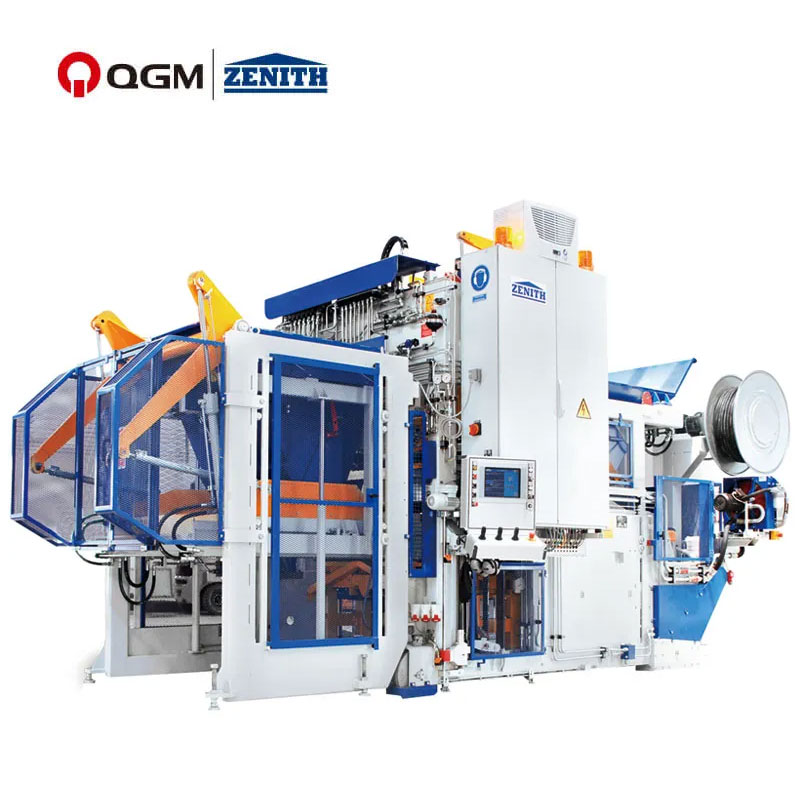Understanding the Brick Making Machine: Types, Features, and Benefits
2024-11-15
The brick-making machine is an essential piece of equipment in the construction industry, designed to automate and streamline the process of manufacturing bricks for various building purposes. These machines have revolutionized the brick production process, significantly improving efficiency, precision, and the ability to meet the growing demand for high-quality building materials. Whether for residential homes, commercial buildings, or large-scale infrastructure projects, brick-making machines play a crucial role in shaping the future of construction.
In this blog, we will explore the different types of brick-making machines, their key features, and the benefits they offer to manufacturers and construction projects alike.
Types of Brick Making Machines
There are several different types of brick-making machines available, each with its specific features, capacities, and application areas. The choice of machine depends on factors such as the volume of bricks needed, the type of bricks being produced, and the desired level of automation. Here are some of the most common types of brick-making machines:
1. Manual Brick Making Machines
Manual brick-making machines are designed for small-scale brick production and are ideal for entrepreneurs or startups. These machines require human effort to operate and are typically less expensive than automated options. However, manual machines are also slower and may not be suitable for high-volume production.
2. Semi-Automatic Brick Making Machines
Semi-automatic machines combine manual labor and automation, requiring minimal human input. These machines typically involve a combination of mechanical processes that automate certain stages of brick production, such as mixing, molding, and curing, while operators may need to manually load and unload the molds. Semi-automatic machines offer a balance between labor savings and cost-effectiveness.
3. Fully Automatic Brick Making Machines
Fully automatic brick-making machines are designed for high-capacity, industrial-scale brick production. These machines require little to no human intervention, with the entire process—from mixing raw materials to curing and unloading the finished bricks—being automated. Fully automatic machines are highly efficient and can produce a large number of bricks in a short amount of time.
4. Hydraulic Brick Making Machines
Hydraulic brick-making machines use hydraulic pressure to form bricks, offering high-quality output with consistent shape and size. These machines are used for producing high-strength bricks and are particularly effective for producing bricks from cement, fly ash, and other materials that require high compaction.
5. Egg Layer Brick Making Machines
Egg-layer machines are a mobile type of brick-making machine that produces bricks directly on the ground. These machines are versatile and can produce a wide variety of brick shapes and sizes. Egg-layer machines are ideal for small to medium-scale production and are highly flexible in terms of the number and type of bricks that can be produced.
Key Features of a Brick Making Machine
The design and features of brick-making machines can vary depending on the model and manufacturer, but some key features are common across most machines:
1. Molding System
The molding system is one of the most important components of a brick-making machine. It is responsible for shaping the raw materials into uniform, solid bricks. The molding system can be either a vibration press, hydraulic press, or mechanical press, each offering different levels of compaction and finish.
2. Mixer
Brick-making machines often come with an integrated mixer to blend raw materials like clay, cement, sand, and water into a homogeneous mixture. The quality of the mix is critical to the final product's strength and durability, so the mixer must be efficient and well-maintained.
3. Automatic Control System
Fully automatic brick-making machines are equipped with advanced control systems that allow operators to set and monitor the entire production process. These systems often include sensors for quality control, temperature monitoring, and automated adjustments to ensure optimal performance and brick quality.
4. Hydraulic or Pneumatic Pressure System
For machines that use hydraulic or pneumatic pressure to form bricks, the system provides the force needed to compact and shape the raw material. These systems ensure the production of strong, durable bricks with consistent size and shape.
5. Curing Chamber
Many brick-making machines feature a curing chamber where the freshly molded bricks are stored to harden. Curing is an essential step in ensuring that the bricks achieve the required strength and durability for construction purposes.
Benefits of Using a Brick Making Machine
1. Increased Efficiency
Brick-making machines can significantly speed up the production process. Automated machines, in particular, are designed to work continuously, allowing for high-volume production with minimal downtime. This improves overall productivity and reduces lead times for construction projects.
2. Consistency and Quality Control
Machines offer a higher degree of consistency compared to manual brick-making processes. Automated systems ensure that each brick has uniform size, shape, and density, which is crucial for construction quality. Additionally, automated quality control features, such as sensors and monitoring systems, help ensure that each batch of bricks meets industry standards.
3. Cost-Effective Production
Although the initial investment in a brick-making machine can be high, these machines can ultimately save money in the long run by reducing labor costs and increasing production capacity. Semi-automatic and fully automatic machines can produce large quantities of bricks with fewer workers, making them cost-effective for large-scale production.
4. Customization and Versatility
Modern brick-making machines can produce a variety of brick types, including standard-sized bricks, hollow bricks, interlocking bricks, and pavers. This versatility allows manufacturers to meet the specific demands of different construction projects and offers a wide range of customization options for clients.
5. Environmentally Friendly
Many modern brick-making machines are designed with energy efficiency in mind. Additionally, they can use recycled materials, such as fly ash or crushed concrete, in the production of bricks. This helps reduce waste and makes the production process more environmentally sustainable.
The brick-making machine is an essential tool in the modern construction industry, providing efficient, cost-effective, and high-quality brick production. From small-scale manual machines to large, fully automated systems, these machines have made brick production faster, more reliable, and versatile. By understanding the different types of machines and their features, manufacturers can select the most suitable machine for their needs, improving production capacity and contributing to the success of construction projects.



